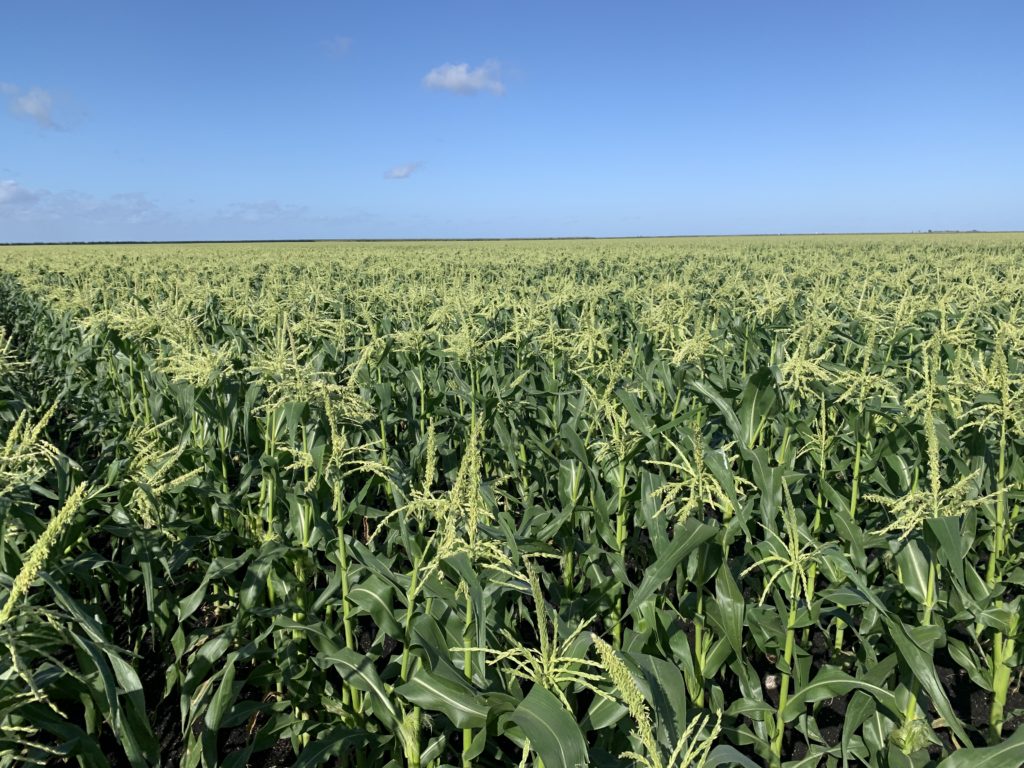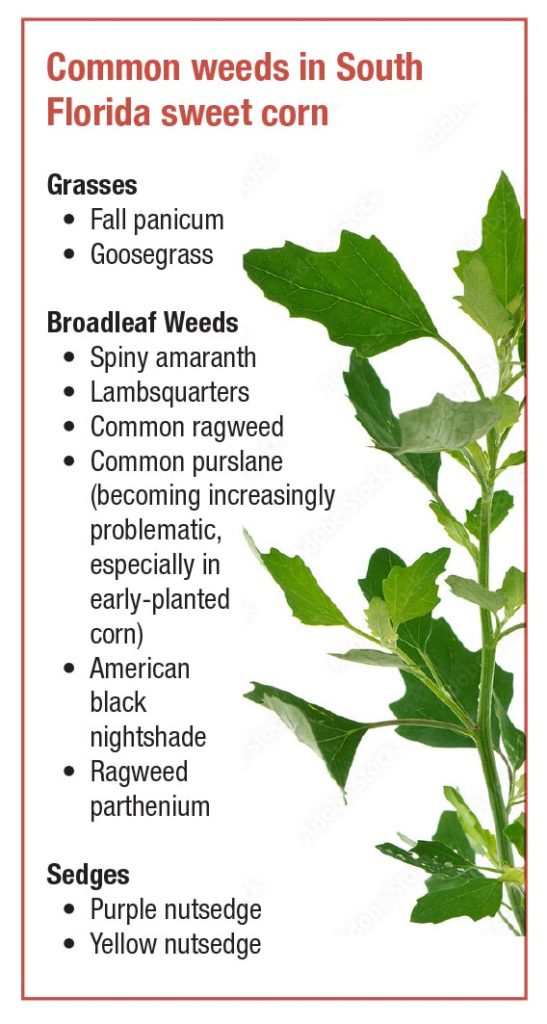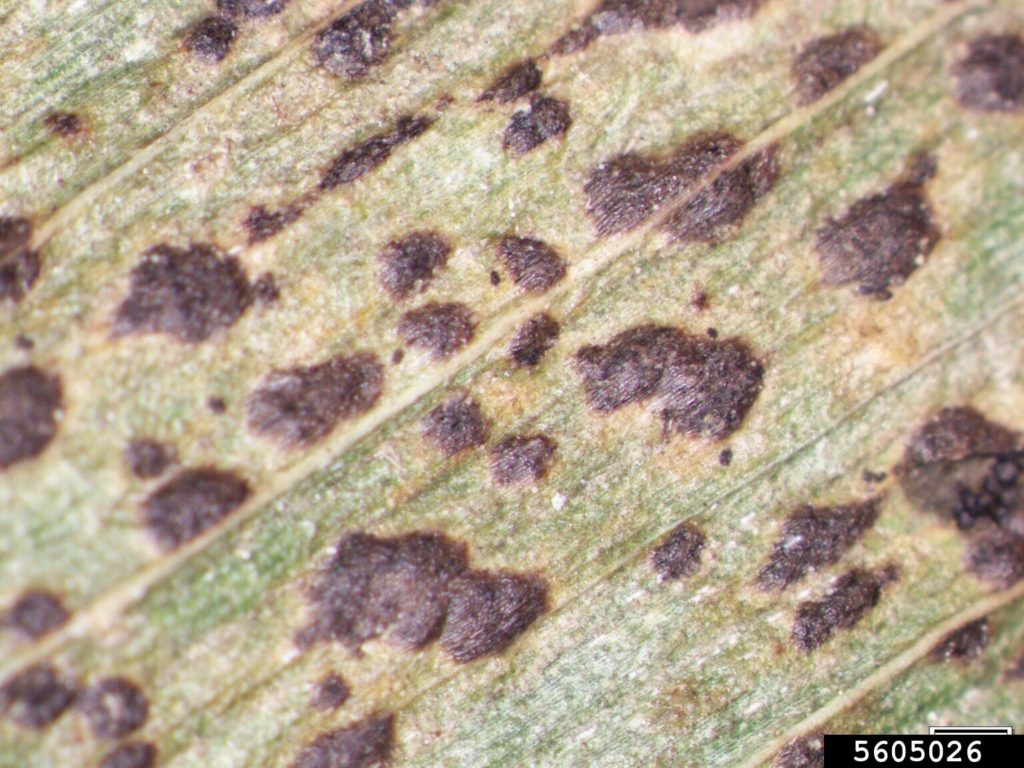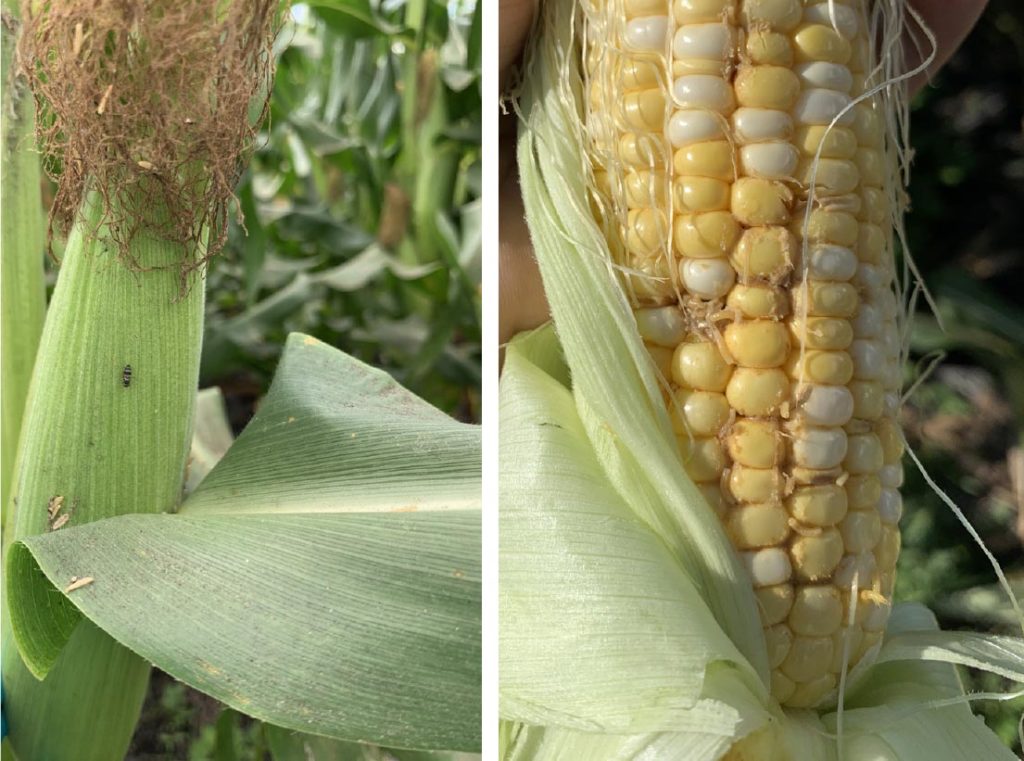By Frank Giles
Florida produces more sweet corn for the fresh market than any other state. About 37,000 acres of the crop are planted in Florida with more than half of that coming from the Palm Beach County/Everglades Agricultural Area (EAA).

Photo by Julien Beuzelin
This year’s crop got off to a shaky start after experiencing heavy rains and winds from Hurricanes Ian and Nicole. But by mid-December, harvest was beginning to get underway, and volumes were expected to catch up quickly.
The University of Florida Institute of Food and Agricultural Sciences (UF/IFAS) Everglades Research and Education Center (EREC) serves local sweet corn growers with educational and research resources. In December, the EREC hosted a sweet corn educational program. A wide range of topics were covered during the meeting that highlighted some of the research being conducted at the center.
“Sweet corn research is a key component of the EREC’s mission because we support Florida growers, particularly in Palm Beach County, who are national leaders in terms of sweet corn production for the fresh market. UF/IFAS faculty conduct research at EREC to develop new varieties and to improve the management of weeds, diseases and insects,” noted Anna Mezaros, UF/IFAS vegetable Extension agent.
WEED MANAGEMENT
Calvin Odero, UF/IFAS associate professor of weed science, provided an update on weed management during the educational program. He discussed the various options sweet corn growers have in managing some of the major weed challenges in the area.

While there’s not much new chemistry in the herbicide pipeline for sweet corn, Odero noted that old standbys like atrazine are still useful management tools.
“We have atrazine that is used here for pre-emergent herbicide applications. The rates are different for mineral (2 to 4 pints per acre) and muck soils (4 to 6 pints per acre),” Odero said. “It is mainly for annual broadleaf, even though the label says it can help with some grasses. But usually, you will need a tank mix to help with the grasses. You need to apply it to moist soil for best performance. A good tank mix is Dual Magnum to broaden your weed control.”
Odero pointed out most all pre-emergent weed treatments need tank mix partners to get satisfactory control of both broadleaf weeds and grasses. He added that soil moisture is important to activate the herbicides, along with some incorporation into the soil to improve performance.
Odero also provided an overview of post-emergent herbicide options, which often can be supplemented with an atrazine tank mix. He said some good post-emergent options include Basagran 4L, Callisto 4 SC, Armezon, Laudis 3.5 EC and Sandea 75 DF.
SCOUTING FOR INVASIVE PESTS
Mary Yong Cong, from the Florida Department of Agriculture and Consumer Services Department of Plant Industry, gave an update on the agency’s ongoing program to monitor for new and emerging pests in the state. The Cooperative Agricultural Pest Survey (CAPS) program is a combined effort by state and federal agencies to conduct surveillance, detection and monitoring of plant pathogens, insects, nematodes and other invertebrate organisms.
The CAPS program is broken up into four surveillance regions in the state. In sweet corn, there were several pests that inspectors were on the lookout for in 2022, including some that have not yet been identified in Florida. Among those is the hedgehog grain aphid, which can transmit cucumber mosaic virus and barley yellow dwarf virus. The aphid has been spotted in other states, including Georgia in 2012.

Photo by Ed Zaworski
Tar spot is a fungus that has been identified in South Florida in 2016, 2018, 2019 and 2021. Fortunately, Cong noted that the fungus has not caused significant problems for sweet corn growers. This is likely due to fungicide applications being made for other diseases. Tar spot has become a significant problem for row crops in the Midwest. The most severe form of tar spot occurs when there is joint infection of Phyllachora maydis and Monographella maydis. To date, M. maydis has not been reported in the United States.
The old world bollworm (Helicoverpa armigera) was detected in the Bradenton, Florida, area in 2015. Three moths were trapped. No other detections have been made since then, which Cong said is a good thing. The pest feeds on more than 217 species of plants, including corn. Cong said surveillance traps are placed in high-risk sites like ports of entry and packinghouses.
Cong encouraged growers to be vigilant for potential new insect pests or pathogens in their fields. Growers should contact her at mary.yongcong@fdacs.gov or Krystal Ashman at krystal.ashman@fdacs.gov. if they see something suspicious.
SILK FLY ECOLOGY
Julien Beuzelin, UF/IFAS assistant professor of entomology, discussed his research on silk fly landscape ecology. The silk fly is the most problematic pest in sweet corn production and often requires multiple insecticide applications for satisfactory control.

Photos by Julien Beuzelin
The purpose of the research was to identify landscapes where silk flies populate. Beuzelin studied habitats surrounding commercial sweet corn fields including sugarcane and non-crop areas that are refuge for corn silk flies. The objective of the study was to find the relative abundance of silk fly adults in sweet corn fields and adjacent areas.
Over the past two seasons, commercial farms were observed in the fall, winter and spring production seasons. In each of the three areas studied (sweet corn, sugarcane and weedy/woody non-crop plants), five multilure traps were set 200 feet apart per site. Samples were taken for two to four weeks during tassel push and early silking.
The study showed that the three silk fly species (E. stigmatias, E. eluta and Chaetopsis massyla) occur in all habitats from fall through spring in the EAA. Flies were generally less abundant in sweet corn fields because of insecticide applications. But there was some extreme variability in observations, indicating that very localized environmental conditions play a major role in pest pressure.
In winter and spring, the proportion of E. stigmatias was greater in sweet corn than in sugarcane and non-crop habitats than in relation to E. eluta. Beuzelin noted, “Follow the E. stigmatias and find the sweet corn.”
E. stigmatias is less susceptible to pyrethroids than E. eluta. Beuzelin said the research suggests an improved corn silk fly management strategy should include treating habitats surrounding sweet corn fields.
BREEDING UPDATE
Marcio Resende, UF/IFAS assistant professor of horticultural sciences, presented an update on sweet corn breeding. He noted a project (called Sweet CAP) funded by the U.S. Department of Agriculture (USDA) that began in 2018 is wrapping up with final reports being written for distribution soon.
“There were a series of outcomes from this study. It was a great opportunity to bring a lot of great researchers together from different parts of the country,” Resende said. “We were able to screen and identify sources of good traits for sweet corn breeding. We found material for southern corn leaf blight and northern corn leaf blight resistance. We also found good ear traits for tip fill and improved seed germination under cold conditions. One of the large outcomes was screening for diversity of important traits and identifying materials that will make good breeding donors of these traits in the future.”
He added that USDA, through its National Institute of Food and Agriculture, has funded a second round of the project for another four years at $7.5 million. Two additional institutions will join the research and will include USDA, UF/IFAS, University of Wisconsin, Washington State University, Iowa State University, Clemson University and Michigan State University.
The new round of research will focus on five project priorities.
- Develop technologies to breed better sweet corn hybrids faster.
- Translate what was learned in the first round of research into improved disease resistance, ear traits and cold germination for both public and private breeding.
- Study nutritional properties of sweet corn for use in consumer preference research.
- Learn to better engineer specific genes (not genetic modification) in sweet corn for desirable traits in breeding.
- Analyze both microeconomic and macroeconomic factors influencing the sweet corn market.










